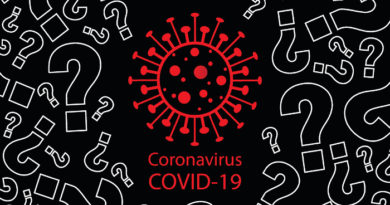Are we ready for the next wave of misinformation about a COVID-19 vaccine?
Factually is a newsletter about fact-checking and misinformation from Poynter’s International Fact-Checking Network & the American Press Institute’s Accountability Project. Sign up here.
Pfizer’s announcement this week that it had a 90% effective vaccine against COVID-19 provided a glimpse of the wave of mis- and disinformation that could engulf any effort to bring about broad distribution – and acceptance – of such a vaccine.
The announcement itself was the subject of a conspiracy theory: that it came out after the election so that voters couldn’t give the Trump administration credit for it.
“Miraculous. COVID cured, the very instant the networks called the race for Biden,” tweeted Republican Sen. Ted Cruz of Texas.
Asked by CNN’s Sanjay Gupta about the timing, Pfizer CEO Albert Bourla said the news happened when it did because “the science brought it at exactly this time. We announced it the moment we learned about it.”
Trump himself blamed government regulators for the post-election timing. His son Donald Trump Jr. suggested it was “nefarious.”
But there might be a silver lining here. An effort by Trump to take credit for development of the vaccine could be interpreted as an endorsement of it, and thus offset the anti-vaccination misinformation circulating in the online circles that many of his followers inhabit.
That is important because of the growing online intersection of vaccine hesitancy and anti-government conspiracy theories. As First Draft’s Claire Wardle told The Daily Beast’s Kelly Weill this week, new research by the nonprofit organization showed that vaccine disinformation “was no longer limited to hardcore anti-vaxxers, but had spread through a constellation of right-wing movements.”
In another report from the London-based Center for Countering Digital Hate, which argued that social media companies had not done enough to combat anti-vaxxers, an accompanying poll of U.S. voters found a “major gap” in vaccine hesitancy between those who voted in 2016 for Hillary Clinton (29%) and those for Trump (55%).
“This suggests a push by the President and his party to persuade their base could be valuable,” wrote the report’s author, Imran Ahmed, the center’s CEO.
To be sure, anti-vaxxers are motivated by a number of different factors, not just their partisan preferences. But at a politically polarized time that seems to demand sides-taking, the worst outcome would be for one “side” or the other to align itself with misinformation about a COVID-19 vaccine that has the scientific community behind it.
In that sense, the development of a vaccine in the politically brackish waters of a lame-duck presidency and Congress – and efforts by politicians who have a following to take credit for it – might not be the worst thing.
– Susan Benkelman, API

- The disinformation machines after the U.S. presidential election was called for Joe Biden shifted into high gear, with much of the false information coming from those who claimed the outcome was “rigged.” President Trump’s tweets were flagged numerous times by Twitter.
- Business Insider’s Allana Akhtar profiled the social media platform Parler that has become a haven for election disinformation after crackdowns by larger platforms like Twitter and Facebook.
- The platform advertises itself as “non-biased free speech social media.”
- Popular conservative commentators and politicians like Sean Hannity and Texas Sen. Ted Cruz have promoted the platform as an alternative to “Silicon Valley censorship.”
- Writing in The New York Times opinion section, Emily Dreyfuss from the Shorenstein Center at Harvard explained how a hashtag with a typo was designed to avoid social media companies’ efforts to take down the content.
- “Called #typosquatting, this tactic is often used by trolls and media manipulators to get around the rules of social media platforms,” she wrote.
- As noted above, there have been many questions about whether the social media platforms, and the public, are prepared for the deluge of misinformation surrounding vaccines. In the United Kingdom, tech giants Google, Facebook and Twitter agreed to work with the government to stamp out vaccine disinformation, the Telegraph reported.
- But there are concerns that the companies are not doing enough. Some highlights:

This past week and a half has been a veritable fact-checking Super Bowl, with fact-checkers in the United States and beyond working overtime to quickly verify or debunk an avalanche of false claims related to the 2020 election. All of them deserve our heartfelt praise and gratitude, but there’s not enough space in this newsletter to do them justice, so we’re going to focus on this fact-check by PolitiFact of a video purporting to show ballot stuffing in Flint, Mich. This claim was also tackled by Agence France Presse, Reuters, and the Associated Press.
Through reverse image search, fact-checkers were able to discover the video was part of 2018 reporting by The Washington Post about ballot stuffing during Russian elections. Many also pointed to the numerous double-headed eagles, a Russian state symbol, scattered around the polling place as a clue that the video may be suspect.
What we liked: This fact-check is emblematic of the importance of stopping before we share. Falsehoods like this one use the appearance of veracity combined with the hope viewers will not look too closely before they further the spread of misinformation. While the Russian eagles are easy for fact-checkers to spot, intense emotions and a tsunami of falsehoods makes it more difficult for the public. Fact-checks like these can help them see the way.
– Harrison Mantas, IFCN

- The Trump campaign created a fake image of The Washington Times calling the 2000 presidential election for Al Gore in an effort to show the fallibility of news outlets in calling presidential races. The newspaper responded on Twitter.
- QAnon is having an identity crisis, The Washington Post reported.
- Disinformation is a threat to democracy, wrote the editorial board of the Times News in Erie, Pa. after a false claim of an Erie County poll worker tossing out ballots went viral.
- Laura Weffer, writing for Poynter, summarized how the members of the IFCN-organized FactChat alliance tackled Election Day disinformation.
- The Washington Post’s chief fact-checker, Glenn Kessler, reflected on four years of covering President Trump, and pondered post-Trump fact-checking.
Thanks for reading. Feel free to send feedback to factually@poynter.org. And send us your favorite fact checks! We’d love to hear from you.
Until next week,
*** This article has been archived for your research. The original version from Poynter can be found here ***


